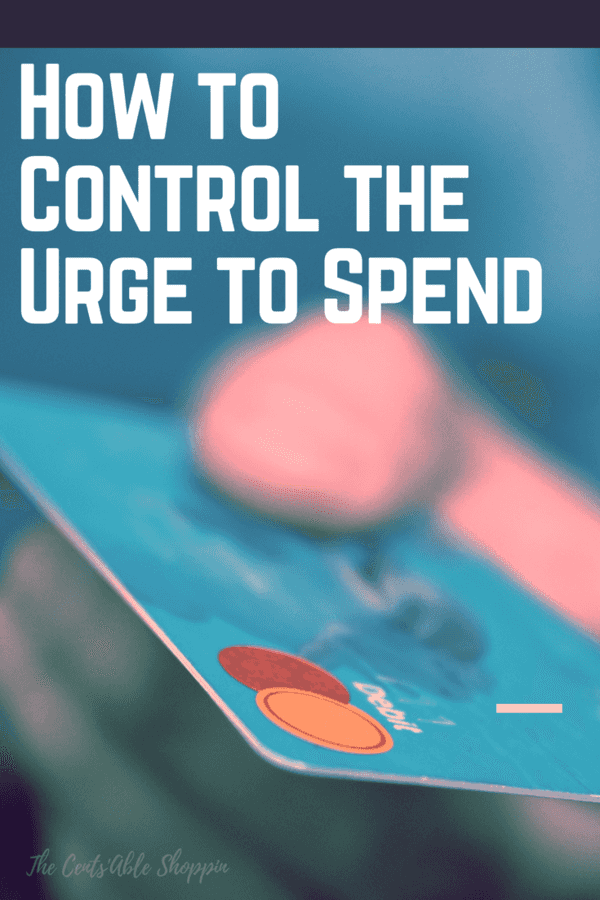
If there is one thing that we all have in common, it’s the temptation to buy things. And buying things is perfectly normal. Unless of course it’s something you don’t need.
We all buy things that we don’t necessarily need – and while that’s ok in moderation it can easily spiral out of control.
There is no doubt that once you leave your house, you face marketing everywhere ~ from the signs on the roadside, to the grocery ads, sales ads, and even your own email inbox. That’s right: your INBOX.
A great deal of psychology goes into helping you increase your spending – whether you are doing that at Walgreens (Balance Reward Points, product sales and even Register Rewards)... or if you are at Best Buy, Fry’s Food Store, even Sonic Drive In.
Y’all, it’s so hard to avoid the urge to spend, especially when you need to go in there to make a purchase.
Through product placement, color, and super specials, stores are always making a sincere effort to help you open up your wallet. From Free Friday Downloads that they are hoping will get you “in” the store to do more shopping than just that free item, to earn that small loss back in the form of other purchases.
Even things like Target Cartwheel and Target REDcard ALL encourage you to spend. The marketing gimmick is the savings attached – but these stores don’t have those offers to help you keep money in your pocket.
If they were they wouldn’t be profitable to them.
The best way to save is to avoid spending
Ahhh.. but it’s so hard! What are we supposed to do – we have to buy stuff to live!
True.
But lets get real. You don’t have to go to Target all the time.
The biggest thing stores do is manipulate your sense. Everything from color to placement to sounds.. feel and even smell … it’s all designed to get you to feel motivated to buy.
Color: When products are attractive and catchy, they command your attention — red is oftentimes used as a motivator to get you to buy… because stores know it’ll command attention from the consumer.
Placement: By making you navigate more through the store, they know it increases the opportunity to buy more things. As hard as it is, try to go straight in, buy exactly what you need, and then walk right out – take cash with you to prevent you from buying any additional items.
That’s harder said than done for most – stores know that the majority of the population won’t be able to do that.. and that’s where they profit – on your pocketbook and weakness.
Feel Factor: By using end caps to feature the most attractive, easy to purchase sales items, they know that they are encouraging the sale.. Once you pick up the item, you feel motivated to buy because your mind has taken control of the item. It’s hard to let it go.
Sounds and Smells: In most stores, if not all, the music is fun, and might make you start singing or tapping your feet.. you’ll feel more comfortable to stay there and shop, and combined with the smells of the wonderful deli-cooked food, you might find reason to pick up lunch or even dinner. What turns into $5 at the Deli for chicken results in a huge grocery cart of stuff you may not have needed but got anyways.
Target is great for that too…. that’s why I don’t go! :) I always say the best way to save is by not shopping at all.
A happy brain is their goal, and they know you will have little willpower to resist – so it’s a win win for them.
In the end, we can always say things like “well… it’s always going to be like that, so why worry?”… or “well everyone has to buy things at some point so what do you plan on doing if you don’t shop?” You can’t control what the stores do – they need to operate, and as a result, they will do what they need to do to earn your business dollar.
But you can be aware of your habits, and you can be aware of the way your brain works. Some small changes on your end to change the way you shop will allow yourself greater control over your money and your weaknesses.
1. Learn to be content
Easier said than done, but is so true – in most cases, we might pop in at Target to kill a few minutes – but that few minutes we need to kill might just turn into everything from checking end caps to the Dollar Spot, where we then find ourselves immersed in the cartwheel app to pick up the latest clothing sales.
Find another avenue to kill a few minutes, if it means pulling in at a gas station to pick up a quick bottled water instead of going to a retail store.
You’ll likely spend less, and end up with a fatter wallet with time.
2. Toss the Sale Ads
Sure, they are designed to help you save, but they are ALSO designed to help you spend too. You can save just as much by not shopping the sale ads. Instead, invest in a CSA each week for your produce (which can be the bulk of your meals) and then bulk shop at Costco or online at Vitacost for your pantry staples.
By avoiding the grocery store together you are winning long term. You can still have food for your family, but you’ll take a less traditional approach to obtaining that food.
By making your own home, health and beauty items from cleaners, to shampoo & mouthwash, and even body wash – so the need for drugstores goes out the window.
By using a CSA, we get our produce for the week – it allows us everything we need to make dinners, put together lunches and have remaining produce for snacks. It also teaches us to use what we have instead of running to the store for odds and ends, while also living seasonally.
We also pick up our [raw] milk directly from the farm too.
3. Buy with Cash
There are several benefits to shopping with cash – one is that it allows you to spend less. It will not give you any extra wiggle room to swipe a card for any additional purchases – so it works well.
Some may be worried about the safety of carrying cash – I have carried cash for the last 6-7 years, and even with 5 kids in tow, never managed to lose any – there is just as much worry with a debit card. You may be protected with a card, but you aren’t protected with a breech of data either.
4. Wait before you commit
When you are in the heat of the moment with a sale, or good deal, it’s easy to justify why you need it. But by taking some time to think about it, and procrastinate on your purchase, you will be less likely to give in to the temptation and you may find that you have since forgotten about the item hours, or even days later.
Read reviews, determine if it’s something you need or merely want, and sit on the idea for a while. You’ll find that in most cases, it wasn’t as necessary as you thought it would be.



